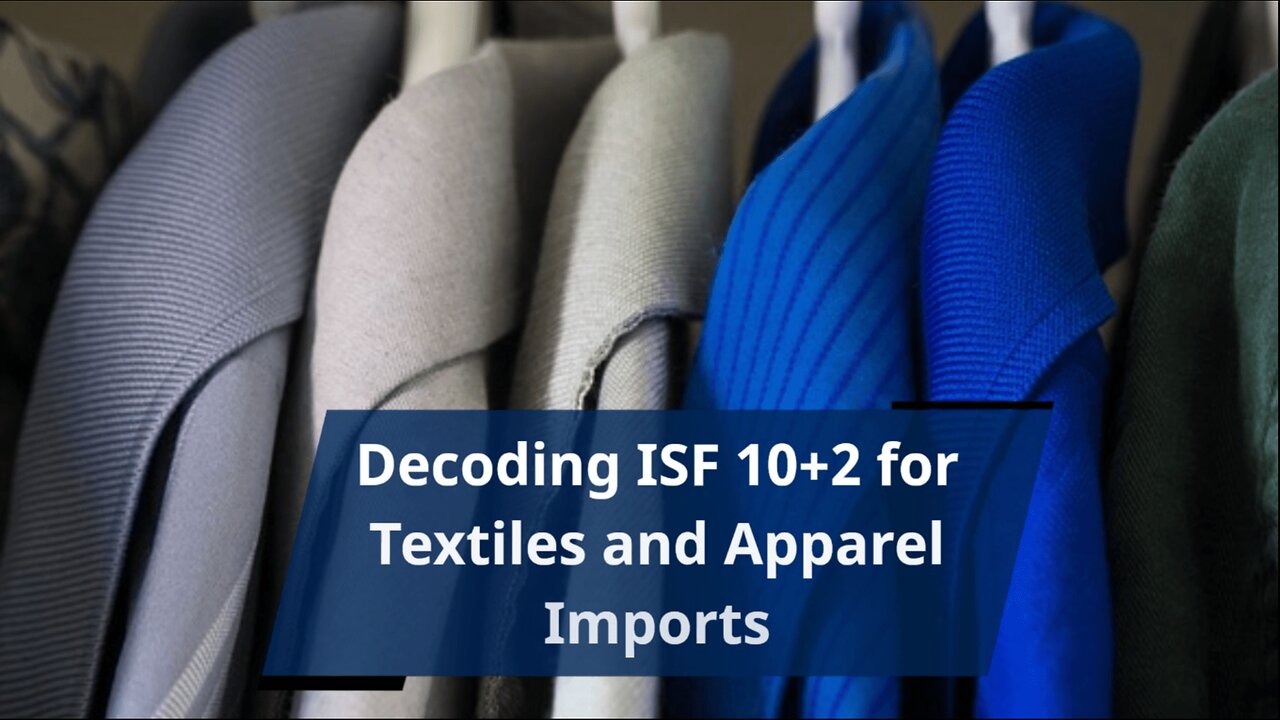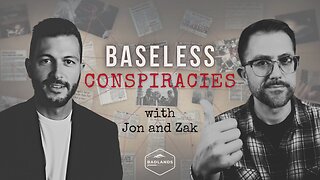Premium Only Content

Navigating ISF Compliance in the Fashion Industry
ISF Solution | (832-904-9333)
clearance@isfsolution.com | www.isfsolution.com
This video delves into the intricacies of Importer Security Filing (ISF) 10+2 and its implications for the importation of textiles and apparel, offering valuable insights for importers and customs brokers in the fashion industry. ISF 10+2 is a mandatory filing requirement enforced by U.S. Customs and Border Protection (CBP) for ocean shipments entering the United States, with specific relevance to the textile and apparel sector. Understanding the unique requirements and considerations of ISF 10+2 for textiles and apparel is crucial for ensuring compliance and efficient cargo clearance. We explore the key data elements and documentation needed for ISF 10+2 filings in the textile and apparel industry, including information about manufacturers, suppliers, and product descriptions. Additionally, we discuss common challenges and best practices for importers and customs brokers navigating ISF 10+2 in the textile and apparel sector. Join us as we navigate the realm of ISF 10+2 and its impact on the importation of textiles and apparel, providing insights and guidance for industry professionals. #usimportbond #isfcustomsbroker #uscustomsclearing #isfentry
0:38 overview of isf-10+2
1:04 compliance with isf-10+2
1:24 required data elements for isf-10+2
1:47 accurate classification of textiles and apparel
2:06 timely data submissio8n
2:22 collabration with suppliers and carriers
2:41 data integrity and quality control
3:05 compliance with textile labeling requirements
3:26 risk-based assessment by CBP
3:50 impact of non-compliance
4:11 ensuring supply chain security
4:28 collaboration with custom brokers
4:49 recordkeeping and document management
5:09 awareness of regulatory updates and changes
5:35 utilizing technology for efficient data submissions
5:52 ongoing training and education
6:09 collaboration with industry associations
6:30 collaboration with textile testing laboratoies
6:52 continuous improvement and risk mitigation
-
 LIVE
LIVE
Lofi Girl
2 years agoSynthwave Radio 🌌 - beats to chill/game to
218 watching -
 42:55
42:55
Stephen Gardner
1 day ago🔥Trump’s SURPRISE Move STUNS Everyone - Democrats PANIC!
89.4K116 -
 1:37:19
1:37:19
Badlands Media
15 hours agoBaseless Conspiracies Ep. 148: The Delphi Murders – Secrets, Setups, and Cover-Ups
37.7K16 -
 5:59:05
5:59:05
SpartakusLIVE
9 hours ago#1 MACHINE Never Stops The GRIND || LAST Stream UNTIL Friday
142K2 -
 28:36
28:36
Afshin Rattansi's Going Underground
1 day agoDoug Bandow: ENORMOUS DAMAGE Done to US’ Reputation Over Gaza, Trump ‘Easily Manipulated’ by Israel
25.7K29 -
 2:45:13
2:45:13
Barry Cunningham
15 hours agoCBS CAUGHT AGAIN! CHICAGO A MESS! LISA COOK IS COOKED AND MORE LABOR DAY NEWS!
108K50 -
 6:39:17
6:39:17
StevieTLIVE
9 hours agoMASSIVE Warzone Wins on Labor Day w/ Spartakus
30.6K1 -
 10:46:42
10:46:42
Rallied
16 hours ago $17.67 earnedWarzone Challenges w/ Doc & Bob
200K4 -
 3:26:25
3:26:25
Joe Donuts Live
9 hours ago🟢 Lost in Space with My Clones: The Alters Adventure Begins
37.1K5 -
 7:20:22
7:20:22
Dr Disrespect
17 hours ago🔴LIVE - DR DISRESPECT - TRIPLE THREAT CHALLENGE - WINNING AT EVERYTHING
224K12